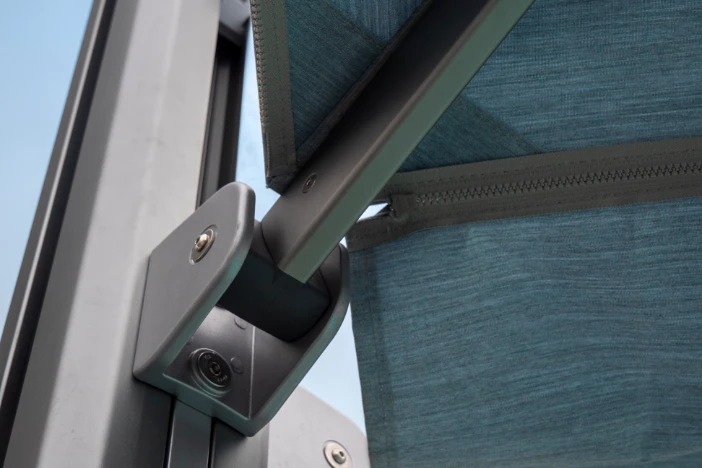
The search for the right patio umbrella can feel a lot like building a championship fantasy team: flashy stats only matter when they hold up all season. Whether you crave shade that’s stylish, practical or built to last through surprise storms, understanding what goes into your umbrella will set you up for less fuss and longer sun-filled afternoons.
This is just one episode of our Ultimate Patio Umbrella Buying Guide, a resource designed so you can skip the guesswork and fast-track your way to shade that impresses and endures.
Pole & Frame Materials
Wood – The Classic Statement
Wooden umbrellas made from teak, eucalyptus, or bamboo offer a grounded feel and organic beauty. The American Hardwood Export Council explains, “The most durable timber species that is commercially available from the North American temperate forest is American white oak… Generally speaking, the most durable timber species in the world grow in tropical forests.” Their technical committee notes that teak, especially its heartwood, ranks “very durable – more than 25 years” against decay.
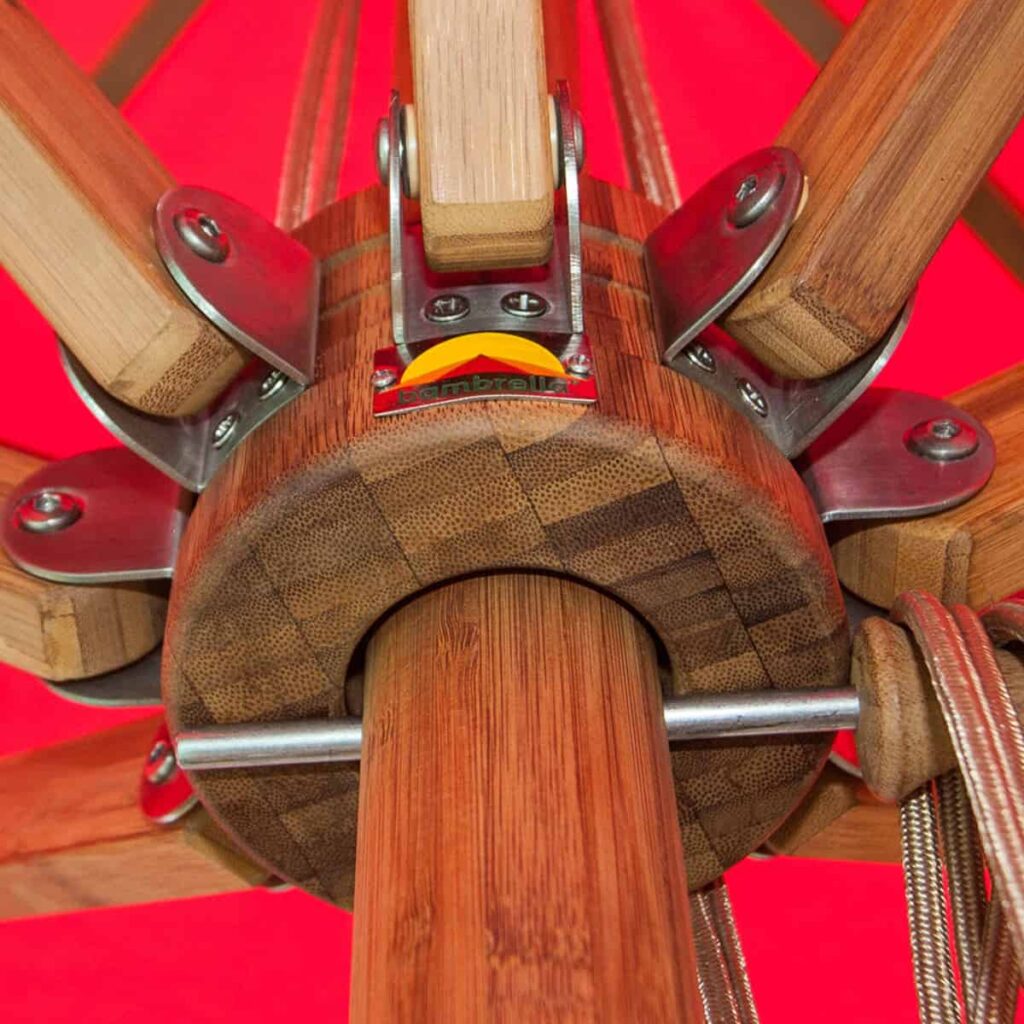
This is why tropical hardwoods like teak are a top choice for outdoor furniture, though designers caution that any outdoor wood will weather, requiring periodic maintenance and treatment to maximize performance. Design also matters; as the Council emphasizes, “Minimizing direct exposure to the elements, reducing water and ground contact and allowing for expansion and contraction must all be considered” for longevity. Faux wood finishes on aluminum or fiberglass can mimic the look but offer improved durability and less upkeep.
Metal – Sleek and Tough
Aluminum and stainless steel are favored for modern patios due to their strength and resistance to corrosion. The International Aluminum Institute reports that “aluminum is lightweight, durable, rust-resistant, and 100% recyclable,” making it a responsible as well as practical choice for outdoor settings. Powder-coating further prolongs its life and appearance. Stainless steel, especially when enhanced with molybdenum, is recommended for marine and salty environments for its outstanding corrosion resistance (International Aluminum Institute – 2024 report).
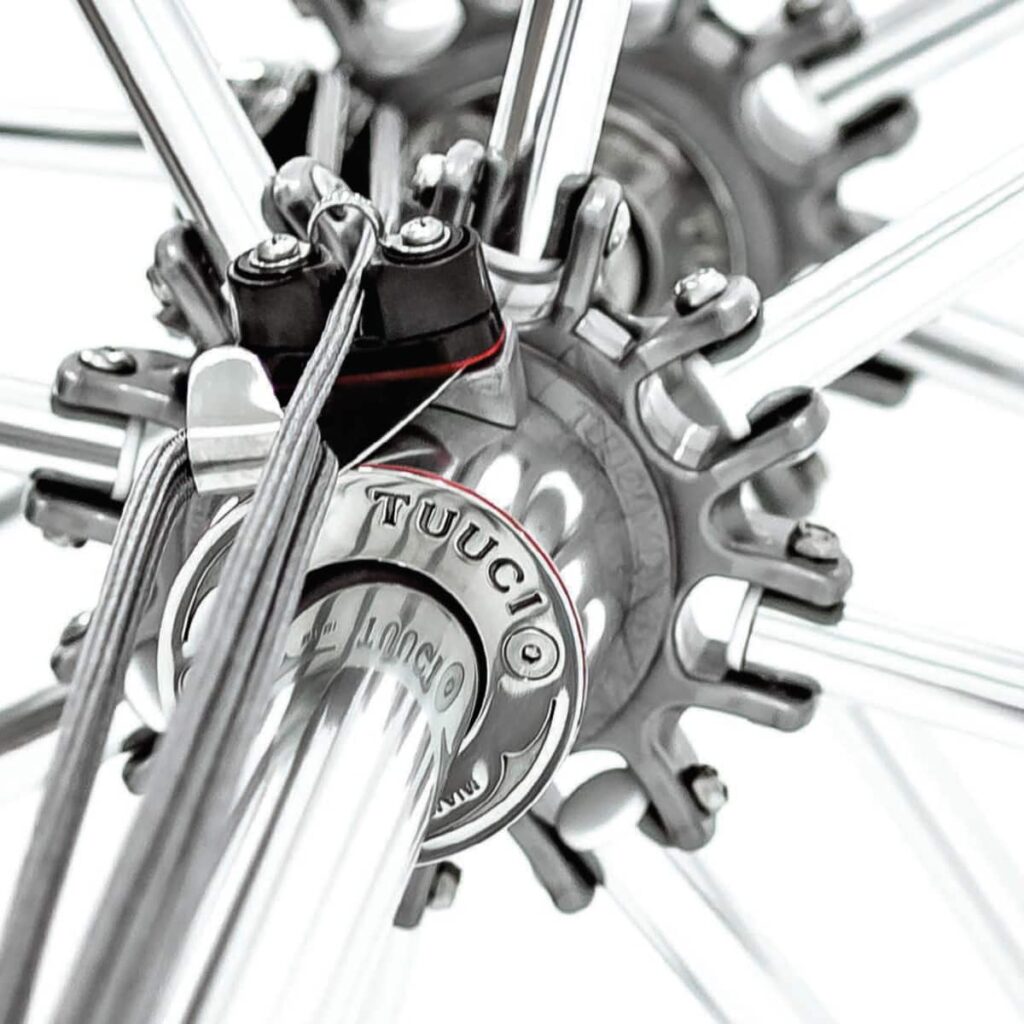
Fiberglass – Quietly Indestructible
When it comes to wind-resistance, independent materials engineers often cite fiberglass for its surprising combination of strength and flexibility. Product reviews from textile test labs consistently report that “fiberglass ribs bend with wind gusts rather than snapping, giving them a significant performance edge for umbrellas in variable climates.” The corrosion and rot-resistance of fiberglass means maintenance is minimal and service life is extended far beyond wood or standard aluminum components.

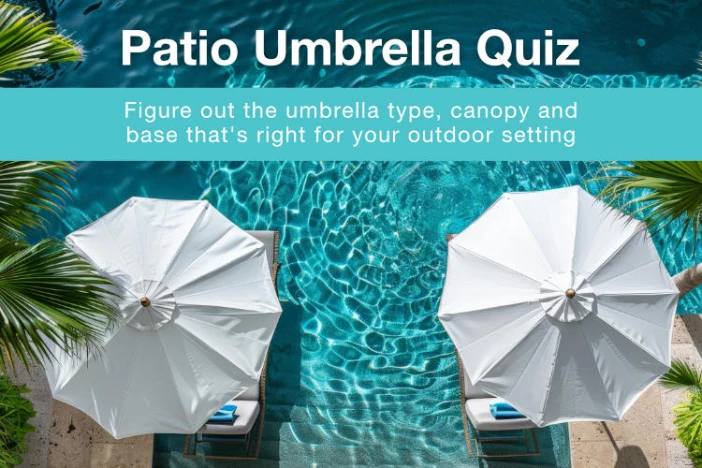
Hardware & Joints – Small Parts, Big Impact
Underappreciated but crucial, hardware makes or breaks every experience with your umbrella. Top choices include stainless steel, brass and molded nylon for crank mechanisms and tilts, all of which deliver season after season. Never buy an option you can’t check up close; nobody wants a crank to jam by midsummer.
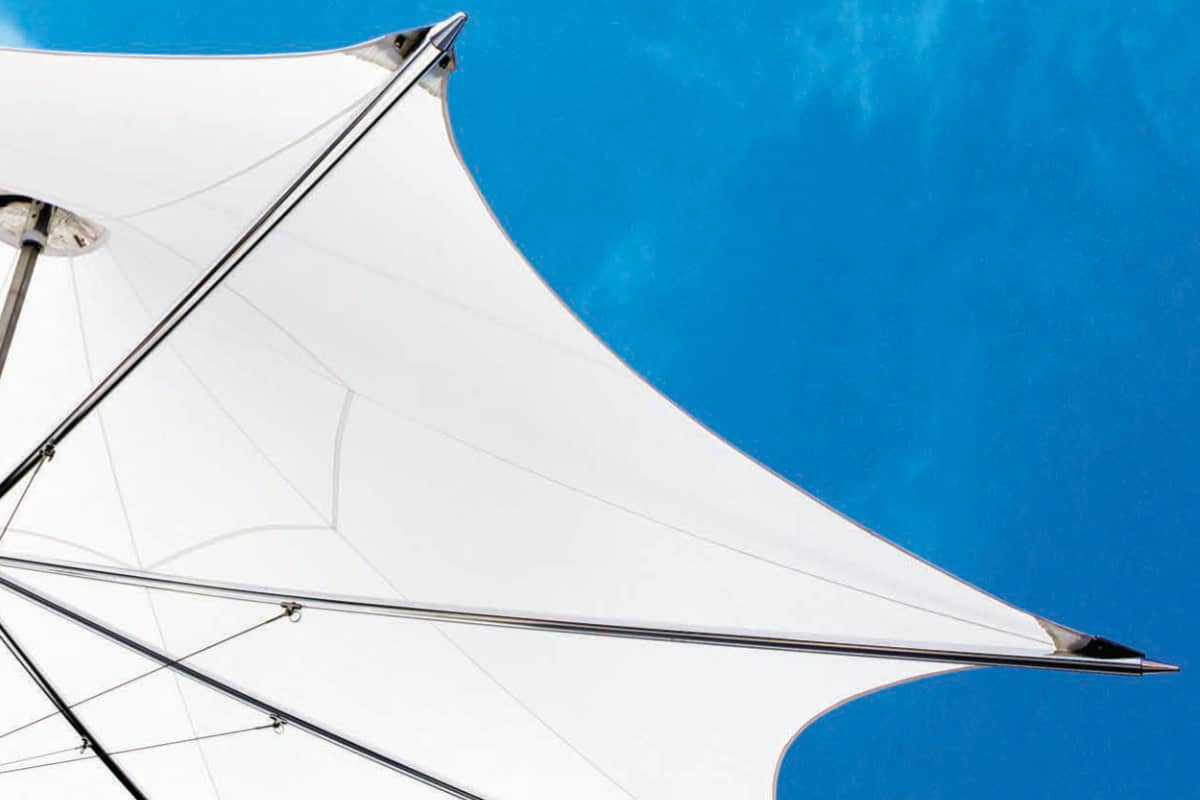
Which Canopy Fabric Works Best?
When choosing your canopy fabric, independent textile engineers stress the importance of understanding coatings and fiber construction. In a widely cited study, Eltahan (2017) cautioned that while coatings such as PVC or styrene-acrylic may increase weather resistance, they tend to decrease the textile’s tensile tearing strength. The Skin Cancer Foundation recommends seeking solution-dyed acrylics and other UV-protective textiles, noting deep, densely woven canopies provide the best protection from harmful ultraviolet rays.
Acrylic – Sunbrella®
Sunbrella solution-dyed acrylic fabric is considered the gold standard for outdoor performance, both at home and internationally. It stands up to erratic weather, resists fading and keeps its good looks through years of use. Sunbrella products range from umbrellas to awnings and even outdoor pillows and it’s frequently the fabric of choice at high-end resorts and large commercial patios. It holds its color against sun and cleaning and is so respected in the industry that it holds both Greenguard and Skin Cancer Foundation certifications.

Sunbrella Features
- 100% solution-dyed acrylic fabric
- Blocks up to 98% of UV rays
- Resists fading, mildew and water
- Cleans with soap, water or bleach
- Breathable weave for comfort
- Premium price tier
- 5–10-year limited color warranty (depends on grade)
- Notable alternatives: Outdura, Suncrylic, Spuncrylic
Polyester – Pacifica®
Pacifica polyester is richer in color and softer to the touch than standard polyester—offering luxury without the premium price. It holds color about four times longer than entry-level polyesters, making it a solid mid-tier pick for families or hosts who want beauty and function but aren’t looking for a forever fabric. Pacifica provides robust UV protection, solid water and mildew resistance and is gentle on hands and wallets.
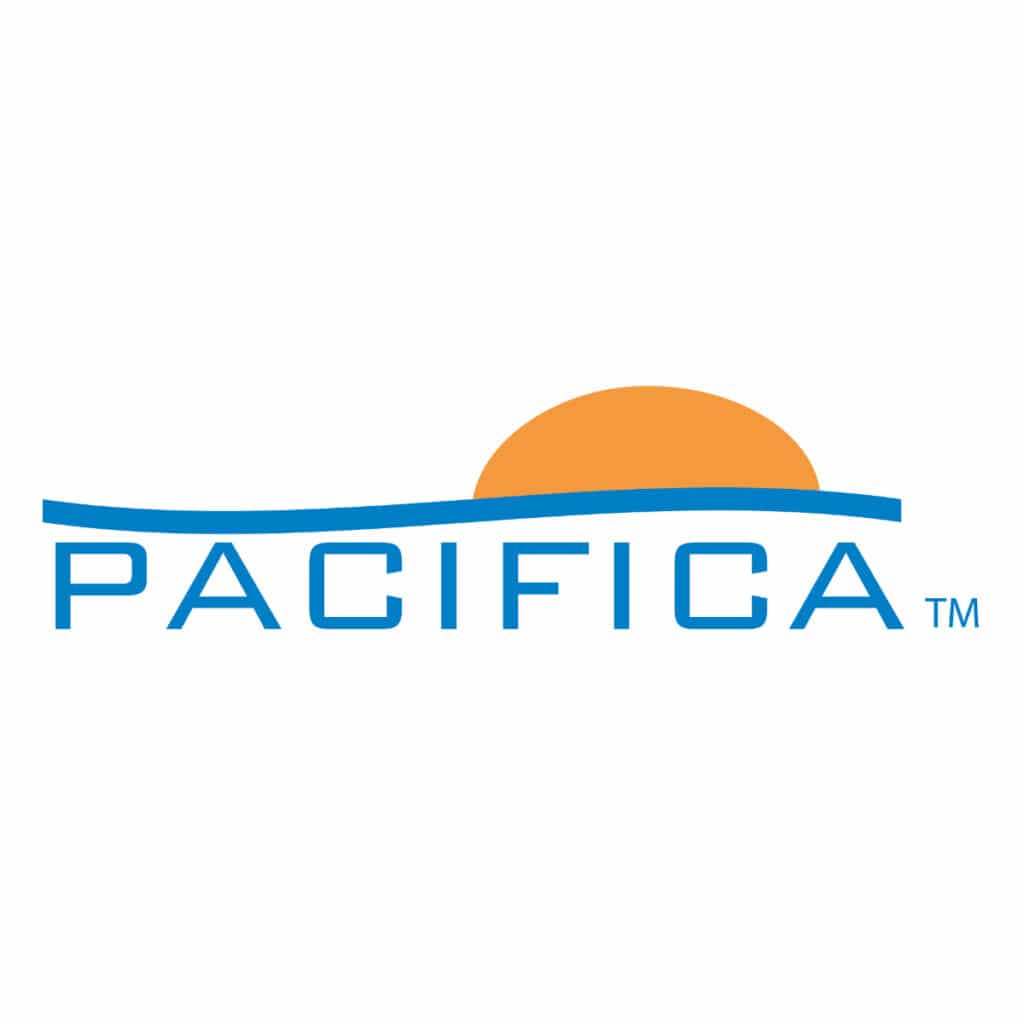
Pacifica Features
- 100% solution-dyed polyester
- UPF 40 UV protection
- Fade and mildew resistant
- Water resistant
- Cleans easily with soap and water
- Soft to the touch
- Mid-range price
- 4-year fade-resistance warranty
Olefin – Texsilk®
Texsilk’s solution-dyed olefin is an eco-responsible, high-performance option prized for its balance of value and features. The fabric is highly stain-resistant, effective at blocking UV and easily tolerates regular cleaning, even with bleach. It’s endorsed for active families and those with pets, while carrying OEKO-TEX certification for environmental responsibility.
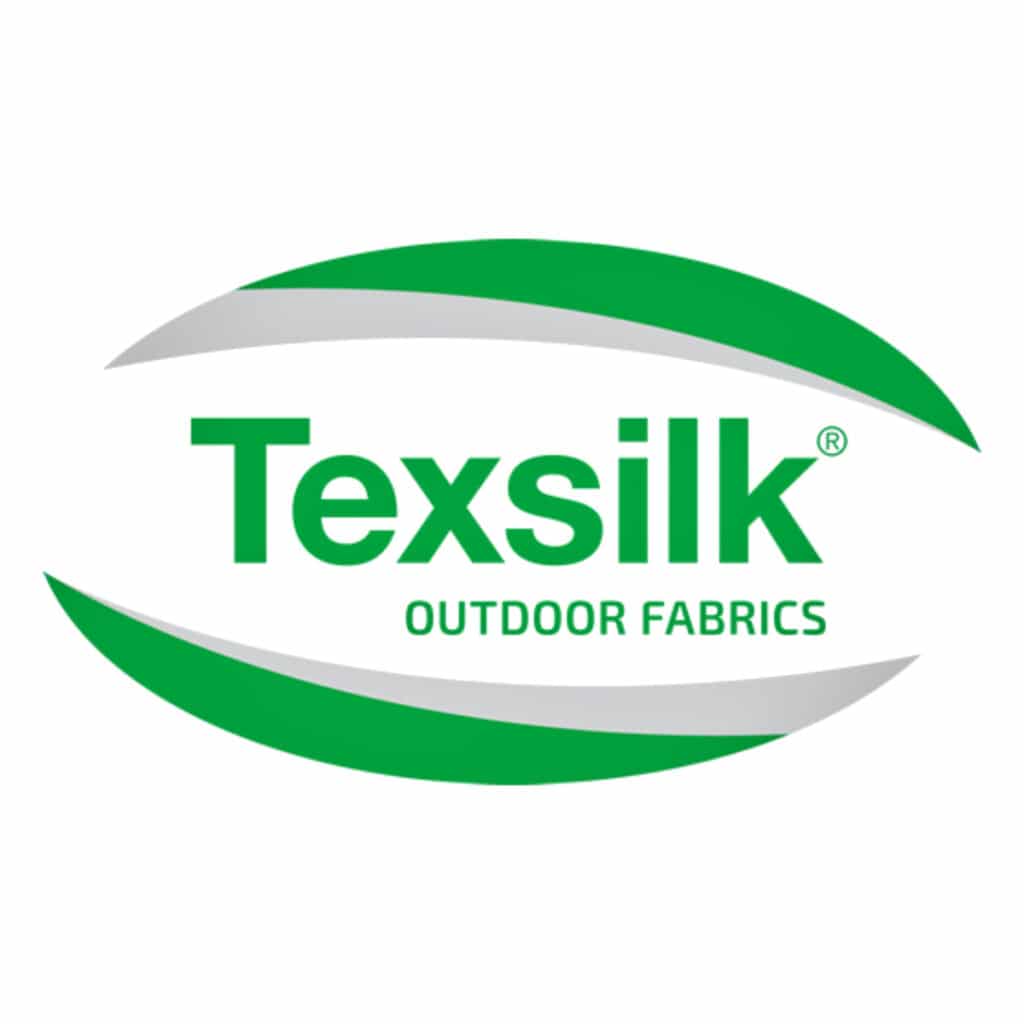
Texsilk Features
- 100% solution-dyed polyolefin (olefin)
- UPF 80 UV protection
- Fade, mildew and water resistant
- Cleans with soap, water and bleach
- Breathable, lightweight and 100% recyclable
- Certified by OEKO-TEX
- Budget-friendly
- 2-year fade-resistance warranty
Polyethylene – Coolaroo®
Coolaroo stands apart for its high-density knitted polyethylene that’s built for extreme sun, not rain. This semi-translucent material lets a breeze through while blocking 90% of UV rays and is ideal for scorching climates that value ventilation over water resistance. Its warranty covers UV damage, but not fading, so if you experience daily storms, look elsewhere.
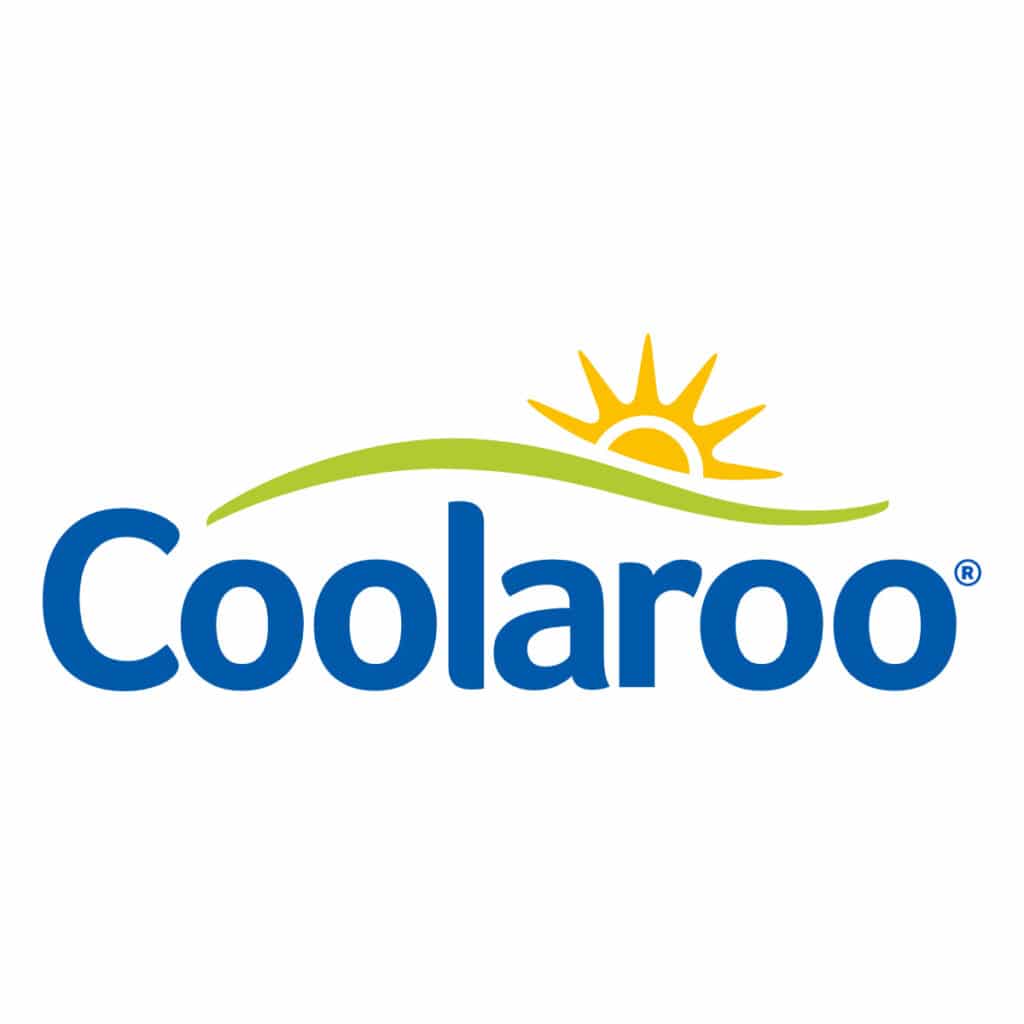
Coolaroo Features
- Dyed high-density knitted polyethylene
- 90% UV protection
- Fade and mildew resistant (fabric is semi-translucent)
- Not water resistant
- Very breathable for high heat
- Cleans with soap and water
- Economical price tier
- 5-year UV-protection warranty (excludes fading)
Patio Umbrella Canopy Fabric Comparison Table
| Feature | Sunbrella | Pacifica | Texsilk | Coolaroo |
|---|---|---|---|---|
| Material | Acrylic | Polyester | Olefin | Polyethylene |
| UV Protection | 98% | UPF 40 | UPF 80 | 90% |
| Fade Resistant | Yes | Yes | Yes | Yes |
| Mildew Resistant | Yes | Yes | Yes | Yes |
| Water Resistant | Yes | Yes | Yes | No |
| Cleaning | Easy | Easy | Easy | Easy |
| Permeable | Yes | Yes | Yes | Yes |
| Pricing | Premium | Mid-range | Economy | Economy |
| Warranty | 5–10 yrs color | 4 yrs fade | 2 yrs fade | 5 yrs UV protection |
| Other | Gold Standard | Soft | Eco-friendly | Semi-translucent |
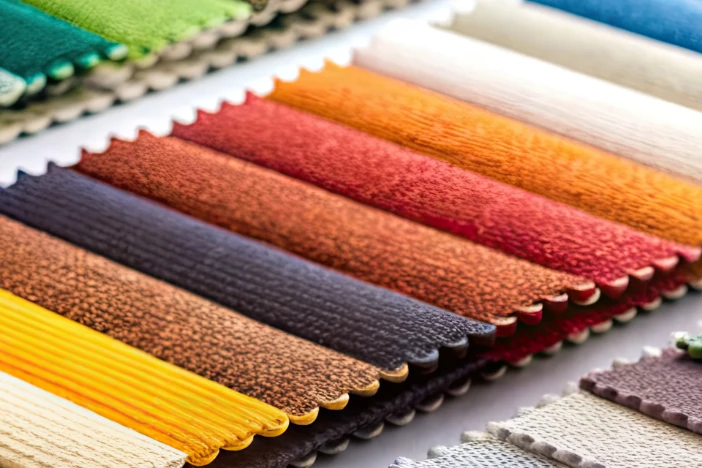
Color – UV, Heat, Style and Care
Color isn’t just an aesthetic decision. Deeper shades such as navy or burgundy absorb more UV and are less reflective, but the air beneath will be a little warmer. Lighter colors brighten a patio and can feel cooler, but reflect more glare and show dirt more readily. Darker options mask stains but fade faster. If your outdoor space has a pool or pale tile, dark fabrics reduce visual glare. Textile researchers and health organizations recommend dark, richly saturated colors for optimal UV blocking.
| Color | UV | Temp. | Fading | Glare | Cleaning |
|---|---|---|---|---|---|
| Dark | Stronger | Hotter | More | Lower | Less Often |
| Light | Weaker | Cooler | Less | Higher | More Often |
Conclusion – Next Umbrella Moves
Once you’ve got materials and fabric sorted, your path to the perfect shade is more than halfway paved. If you’re still narrowing down the right size, shape or wondering what base will keep your setup steady, don’t miss the deep-dive in our types, sizes and shapes guide. Lock down your base or mounting requirements with our no-nonsense advice at bases and mounts. If you crave features, accessories or just want to see what’s possible, head to features and accessories. For expert wind strategies, the wind use section is essential. To keep your umbrella vibrant and functional, rely on our maintenance and cleaning guide.
Frequently Asked Questions – Patio Umbrellas – Materials & Fabrics
What is the best material for outdoor umbrellas?
There are a variety of great weather and UV-resistant canopy textiles:
- Acrylic – Sunbrella
- Polyester – Pacifica
- Olefin – Texsilk
- Polyethylene – Coolaroo
References




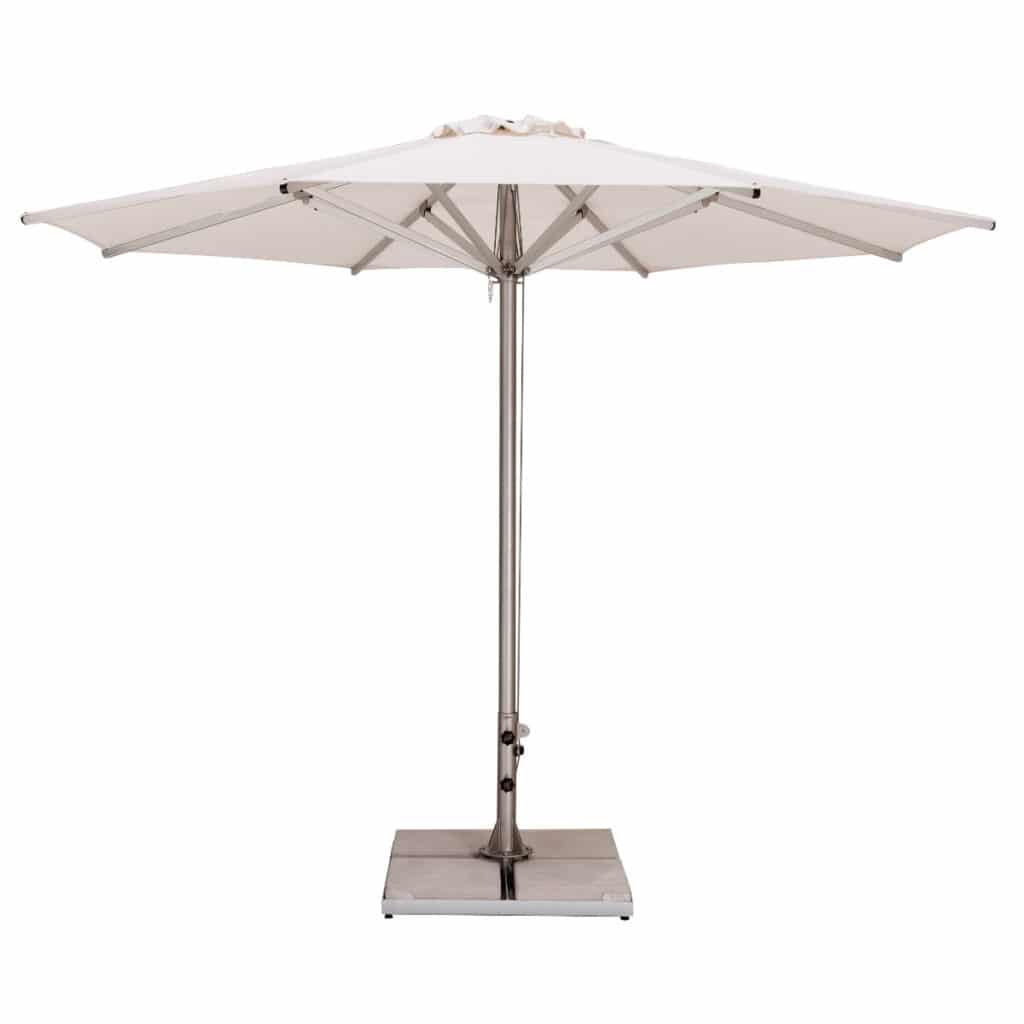
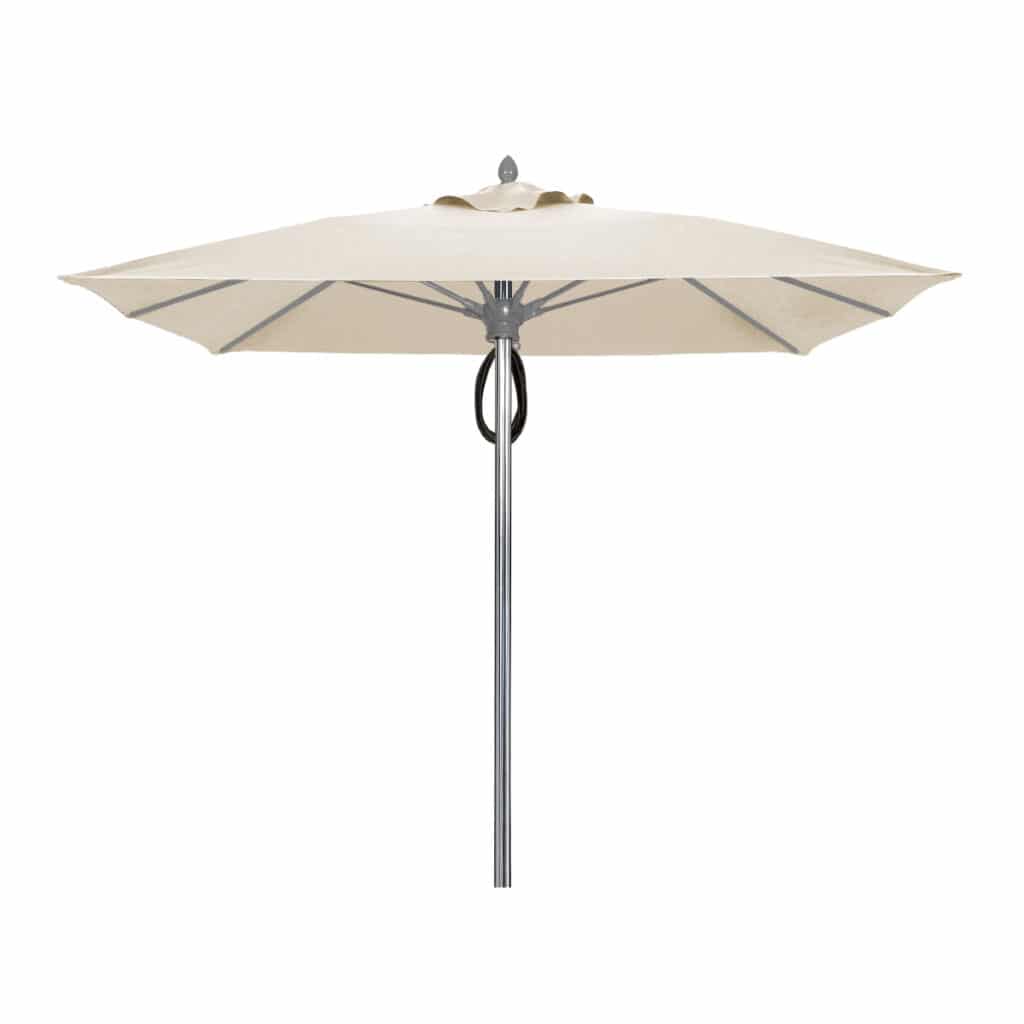





Leave a Reply